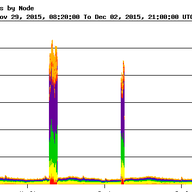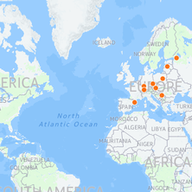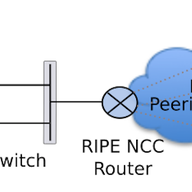
RIS Route Collector Changes
• 2 min read
We are starting to migrate the RIPE NCC RIS route collectors to the new data collection architecture.

Based in Amsterdam (NL)
Articles
Likes on articles
Former manager of the Global Information Infrastructure team at the RIPE NCC.

• 2 min read
We are starting to migrate the RIPE NCC RIS route collectors to the new data collection architecture.

• 3 min read
Recently we have seen an increase in the frequency of excessive traffic towards the RIPE NCC DNS infrastructure. Our servers generally absorb peak loads without an impact on our DNS services. However, to be better prepared for extreme traffic floods, we will work with an external party to provide a…

• 4 min read
In this report we provide some more details about the incidents of 30 November and 1 December 2015, as seen from the K-root environment. We also share some of the lessons we took away from this event.

• 6 min read
In April this year we announced that K-root would open up for expansion to new locations. Since then we have added 17 additional K-root hosted nodes. Now is a good point in the expansion of K-root for us to provide a short update.

• 9 min read
We're getting ready to expand K-root coverage, and we'll soon be inviting interested members of the community to express their interest in hosting their own K-root node. Learn more about how we propose expanding the network, what the requirements are for hosting your own K-root node, and the projec…

• 5 min read
We have redesigned the K-root architecture for our hosted nodes, formerly known as K-root local instances. System architecture and network setup have been simplified a lot. This will reduce our management effort for K-root and reduce costs for K-root hosts.

• 3 min read
The RIPE NCC announced a new version of DNSMON, available for testing by the public, in March 2014. We are now planning the removal of the old DNSMON.

• 4 min read
This report is a follow up to an earlier article, in which we detailed our investigations into the use of virtualisation technology as a suitable means to provide other services via the RIPE Atlas anchor hardware, beyond its primary anchor function.

• 4 min read
This article describes the main results of a research project undertaken by Luigi Corsello. During this project Luigi looked at possibilities to use virtualisation technology to expand RIPE Atlas anchors to provide additional services.
Showing 9 article(s)
Hi Adrian, Thanks for this feedback. We are following up with you out-of-band to investigate this further. Romeo
“Hi Anand, it's really interesting. I am curious how you decided the location. It seems the ~45% of the request are served from the servers in London. Best, Danilo”
Hi Danilo, The location of this new, experimental, node was not chosen for any specific reason. It is an experiment and as such could have been done in other locations as well. The location of the other service clusters is mostly 'historical'. Amsterdam and London where the first two locations where K-root started, so many many years ago it was a relatively simple next step to add a second DNS cluster to those locations. The Stockholm node was added some time later as part of a broader effort to add more resilience to RIPE NCC's services. Romeo
“Looking forward for the experiment's results. Where do I find that chart in ripestats? Thank you”
Hi Besmir, As mentioned above, we will have more details later. The chart above is currently not publicly available.
“good move! but how about some nodes outside of europe? folk need to resolve reverses all over the internet.”
Hi Randy, If this experiment works out as expected, we will be open to add locations globally, much like we do with K-root. This is in fact one of the reasons why we want to take this approach, because it will allow us to improve our reachability in other regions quite easily.
Showing 4 comment(s)